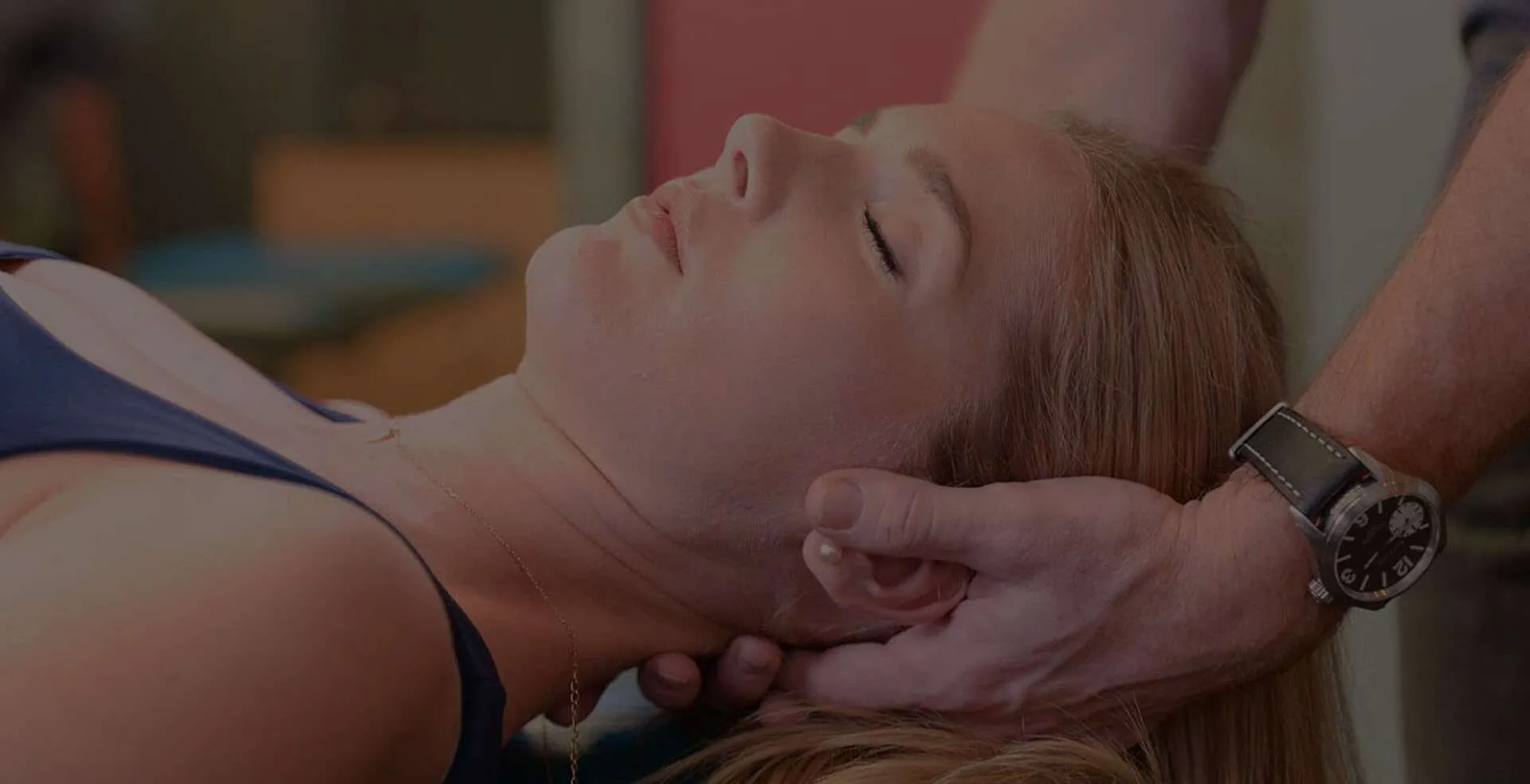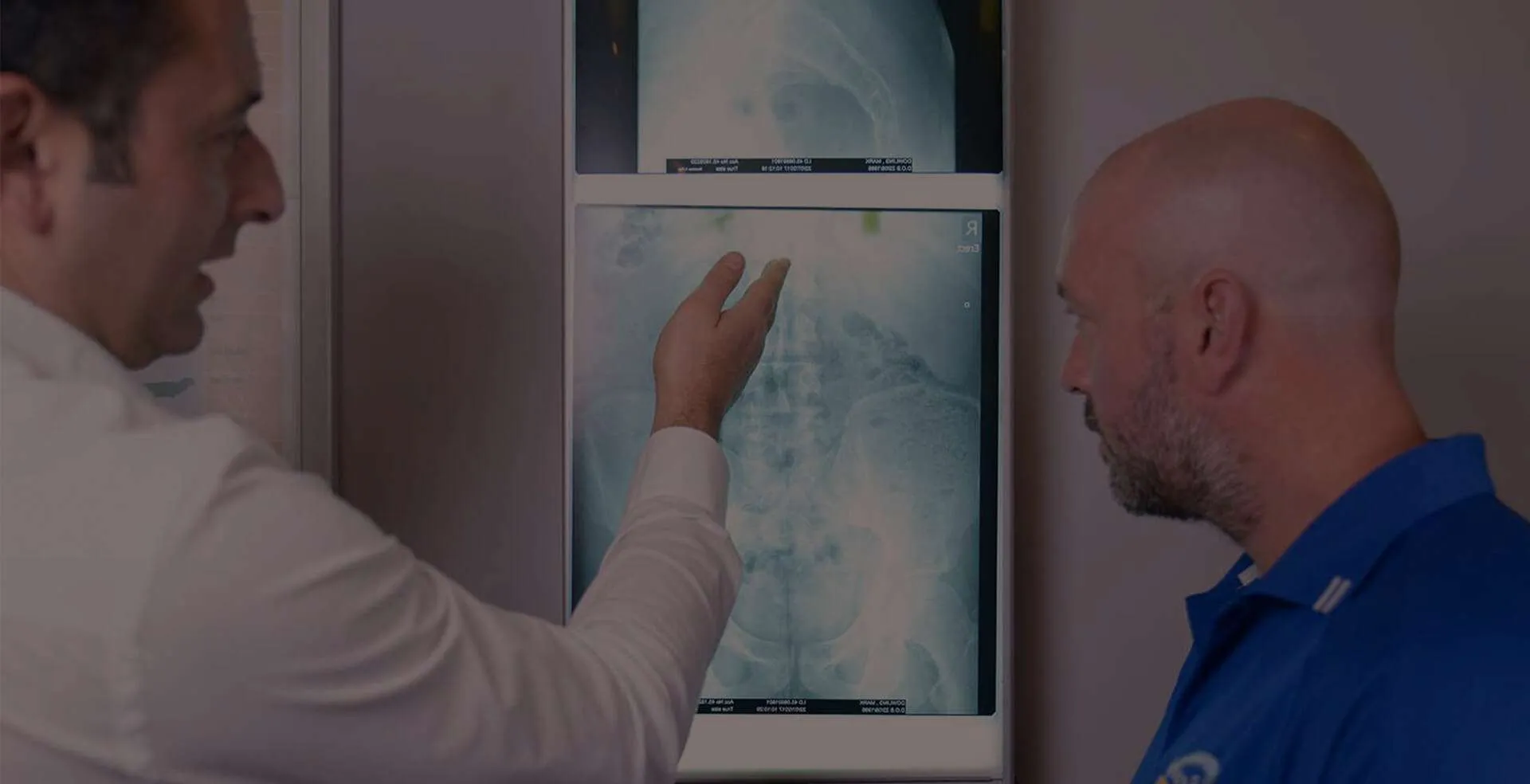Understanding Shoulder Pain and Best Treatments
Shoulder pain is a common complaint that can significantly impact daily life, affecting everything from work productivity to sleep quality. Whether caused by injury, overuse, or underlying conditions, this discomfort can range from a mild ache to severe, debilitating pain. While many people assume shoulder issues are isolated to the joint itself, chiropractors understand that the intricate connection between the spine, nerves, and shoulder complex often plays a crucial role in shoulder discomfort.
By addressing not just the symptoms but the root cause of shoulder pain, chiropractic care offers a holistic approach to relief and rehabilitation, helping patients regain mobility and return to their normal activities.

Solutions for Shoulder Pain
- Manual Adjustments
- Soft Tissue Therapies
- Rehabilitative Exercises
- Modalities and Advanced Techniques
- Collaborative Care
Common Causes of Shoulder Pain
The causes of shoulder pain are diverse and often complex, ranging from acute injuries to chronic conditions that develop over time. Understanding these underlying factors is crucial for those seeking to alleviate shoulder pain effectively.
Rotator Cuff Tendinitis
One of the most common causes is rotator cuff tendinitis, where the tendons connecting muscles to bones become inflamed, often due to repetitive overhead motions or age-related wear and tear. This condition often requires therapy for a torn or injured rotator cuff.
Shoulder Impingement Syndrome
Shoulder impingement syndrome occurs when the rotator cuff tendons are pinched between the upper arm bone and the tip of the shoulder blade, leading to pain and restricted movement.
Frozen Shoulder (Adhesive Capsulitis)
Frozen shoulder, or adhesive capsulitis, is characterized by stiffness and pain, typically developing slowly and often without a clear cause, though it’s more common in individuals with diabetes or those who’ve had prolonged immobility of the arm.
Osteoarthritis and Thoracic Outlet Syndrome
Osteoarthritis, the wear-and-tear of joint cartilage, can affect the shoulder joint, causing pain, stiffness, and a grinding sensation. Thoracic Outlet Syndrome is caused by a compression of the blood vessels or nerves (or both) as they pass through the Thoracic Outlet Space which is located in the shoulder region. The space is bordered by our collarbone, 1st rib, and the scalenes muscle in the front of the neck.
Traumatic Injuries
Traumatic injuries, such as dislocations, fractures, or tears in the ligaments or tendons, are acute causes that can lead to immediate and severe shoulder pain.
Referred Pain
Less obvious but equally impactful are referred pain sources, where the discomfort in the shoulder actually originates from issues in the neck or upper back, highlighting the interconnected nature of the musculoskeletal system.
Poor Posture and Occupational Factors
Many people have health-related problems due to poor posture, especially in our increasingly sedentary and technology-driven lifestyles. That can contribute to shoulder pain by placing undue stress on the muscles and joints of the upper body. Occupational factors play a significant role too, with jobs requiring repetitive motions or heavy lifting increasing the risk of shoulder problems.
Sports and Systemic Conditions
For athletes, particularly those in throwing sports or swimming, the repeated stress on the shoulder joint can lead to overuse injuries and chronic pain. Systemic conditions like rheumatoid arthritis or fibromyalgia can also manifest as shoulder pain, underscoring the importance of a comprehensive medical evaluation.
Other Health Issues
Even seemingly unrelated health issues, such as heart disease or gallbladder problems, can sometimes present with referred pain in the shoulder area. Given this wide array of potential causes, seeking professional help is crucial for accurate diagnosis and targeted treatment. Chiropractors, with their expertise in musculoskeletal health, are well-equipped to identify the root cause of shoulder pain and develop a tailored treatment plan.
Recognizing the Symptoms of Shoulder Pain
Shoulder pain manifests through a variety of symptoms, each providing clues to the underlying cause and guiding the path to relief.
Range of Pain
Shoulder pain can range from a dull, persistent ache to sharp, intense discomfort that significantly limits movement. Many individuals experience stiffness, particularly when trying to raise their arm or reach behind their back, which can make simple daily tasks challenging. A common complaint is pain that worsens at night, often disrupting sleep and leading to fatigue.
Sensations and Weakness
Some people describe a clicking or grinding sensation when moving the shoulder, which may indicate damage to the joint surfaces or surrounding tissues. Weakness in the arm is another telltale sign, particularly noticeable when attempting to lift objects or perform overhead activities.
Swelling, Numbness, and Tingling
Swelling or visible deformity around the shoulder joint can occur in more severe cases, such as after a dislocation or fracture. Some individuals may experience numbness or tingling that extends down the arm, which could suggest nerve involvement.
Pain Location
The location of the pain can also vary, with some feeling it deep within the shoulder joint, while others experience it more in the upper arm or even radiating towards the neck or elbow. It’s important to note that the severity of symptoms doesn’t always correlate with the extent of the injury; even minor issues can cause significant discomfort. Recognizing these symptoms early and seeking appropriate care is crucial for effective management and to find relief. Shoulder pain treatment approaches, including chiropractic care, physical therapy, and specific rotator cuff tear therapies, can be tailored based on the presenting symptoms to provide targeted relief and promote healing.
Effective Treatments for Shoulder Pain
Chiropractic care offers a comprehensive approach to pain relief for shoulder pain, addressing not just the symptoms but the underlying causes of discomfort. When a patient presents with shoulder pain, a chiropractor begins with a thorough assessment, including a detailed medical history and physical examination.
Manual Adjustments
One of the primary chiropractic treatments for shoulder pain involves manual adjustments of the spine and shoulder joint. These precise, controlled movements help to realign the joint, reduce pressure on nerves, and improve overall biomechanics.
Soft Tissue Therapies
In addition to hands-on treatments, chiropractors often incorporate rehabilitative exercises into their treatment plans. These exercises are designed to strengthen the muscles supporting the shoulder, improve flexibility, and enhance overall joint stability. For patients seeking shoulder pain relief, a progressive exercise program can be crucial in preventing future injuries and maintaining long-term shoulder health.
Rehabilitative Exercises
In addition to hands-on treatments, chiropractors often incorporate rehabilitative exercises into their treatment plans. These exercises are designed to strengthen the muscles supporting the shoulder, improve flexibility, and enhance overall joint stability. For patients seeking shoulder pain relief, a progressive exercise program can be crucial in preventing future injuries and maintaining long-term shoulder health.
Modalities and Advanced Techniques
Chiropractors may also use various modalities to complement their manual treatments. Cold therapy can help reduce inflammation and numb pain in acute injuries, while heat therapy can relax muscles and increase blood flow to promote healing in chronic conditions. Ultrasound therapy uses sound waves to penetrate deep into the tissues, reducing pain and inflammation while promoting cellular repair. In severe cases, chiropractors may use kinesiology taping to provide support to the injured area, reduce swelling, and enhance proprioception.
Collaborative Care
In some cases, chiropractors may collaborate with other healthcare professionals to provide comprehensive care. For instance, in complex rotator cuff injury treatment scenarios, a chiropractor might work alongside orthopedic specialists or physical therapists to ensure a well-rounded approach to recovery. Chiropractic treatment plans are highly individualized. The frequency and duration of treatments can vary widely depending on the severity of the condition, the patient’s overall health, and their response to care. Some patients may experience significant shoulder pain relief after just a few sessions, while others with chronic conditions may benefit from ongoing maintenance care to manage their symptoms and prevent recurrence.
Patient Education and Self-Care
By combining these various approaches—manual adjustments, soft tissue therapies, rehabilitative exercises, modalities, lifestyle advice, and patient education—chiropractic care offers a non-invasive, drug-free path to shoulder pain relief. Whether dealing with acute injuries, chronic conditions, or even post-surgical rehabilitation, chiropractic treatment can play a vital role in restoring shoulder function and improving quality of life.
Additional Tips for Treating Shoulder Pain
While professional care is essential for shoulder pain relief, there are several self-care strategies that can complement treatment, especially for those undergoing therapy for rotator cuff injury for torn rotator cuff or dealing with chronic shoulder issues.
Sleep Posture
Maintaining proper sleep posture is crucial; using a supportive pillow that keeps the head, neck, and shoulders aligned can prevent unnecessary strain during rest. For side sleepers, placing a small pillow between the arm and torso can help maintain proper shoulder alignment.
Stress Management
Stress management techniques can also play a significant role in shoulder pain management, as tension often manifests physically in the neck and shoulder area. Practices such as deep breathing exercises, meditation, or gentle yoga can help reduce this tension and promote overall relaxation.
Hydration and Diet
Staying hydrated and maintaining a balanced diet rich in anti-inflammatory foods can support the body’s natural healing processes. For those engaged in sports or activities that place repetitive stress on the shoulders, proper technique and adequate rest are vital to prevent further injury and support recovery. Working with a coach or trainer to refine technique can be particularly beneficial.
Heat and Cold Therapy
Heat and cold therapy can be valuable tools for managing shoulder pain at home. Applying heat before activities can help relax muscles and increase flexibility, while cold therapy after exercise or at the end of the day can help reduce inflammation and numb pain. For chronic conditions, alternating between heat and cold can be particularly effective. These habits and self-care strategies, when combined with professional therapy for shoulder pain or other shoulder conditions, can significantly enhance the healing process and improve overall shoulder health.
Dealing With Shoulder Pain - Summary
Shoulder pain is a common and often debilitating condition that can significantly impact daily life. Whether caused by injury, overuse, or underlying health issues, it’s essential to address shoulder pain promptly and effectively. Chiropractic care offers a comprehensive approach to treating shoulder pain, focusing on not just symptom relief but also addressing the root causes of discomfort.
From manual adjustments and soft tissue therapies to rehabilitative exercises and lifestyle advice, chiropractors provide tailored treatment plans designed to alleviate pain, improve mobility, and prevent future injuries. However, managing shoulder pain is a collaborative effort. Patients play a crucial role in their recovery by following prescribed exercises, maintaining good posture, and making necessary lifestyle adjustments.
Remember, each case of shoulder pain is unique, and what works for one person may not work for another. That’s why it’s important to work closely with your chiropractor to develop a personalized treatment plan. With patience, dedication, and the right care, most people can find significant relief from shoulder pain and return to their normal activities. If you’re struggling with shoulder pain, don’t hesitate to seek professional help – your path to recovery and improved quality of life may be closer than you think.
Neck Pain

How to Know If Shoulder Pain Is Serious?
Shoulder pain is a common complaint that can stem from various causes, ranging from minor strains t...
Pregnancy Back Pain: Chiropractic Relief
Pregnancy is indeed something to be happy about—the joy of creating an entirely new human being who...
The Main Reasons for Lower Back Pain
You’ve probably experienced some form of lower back pain, regardless of your age. Some of it is act...
Here’s Why Chiropractic Care Is Effective for Back Pain
Back pain is a pervasive issue affecting millions worldwide, and most of us have probably experienc...
Back Pain

How to Know If Shoulder Pain Is Serious?
Shoulder pain is a common complaint that can stem from various causes, ranging from minor strains t...
Pregnancy Back Pain: Chiropractic Relief
Pregnancy is indeed something to be happy about—the joy of creating an entirely new human being who...
The Main Reasons for Lower Back Pain
You’ve probably experienced some form of lower back pain, regardless of your age. Some of it is act...
Here’s Why Chiropractic Care Is Effective for Back Pain
Back pain is a pervasive issue affecting millions worldwide, and most of us have probably experienc...
Disc Pain

How to Know If Shoulder Pain Is Serious?
Shoulder pain is a common complaint that can stem from various causes, ranging from minor strains t...
Pregnancy Back Pain: Chiropractic Relief
Pregnancy is indeed something to be happy about—the joy of creating an entirely new human being who...
The Main Reasons for Lower Back Pain
You’ve probably experienced some form of lower back pain, regardless of your age. Some of it is act...
Here’s Why Chiropractic Care Is Effective for Back Pain
Back pain is a pervasive issue affecting millions worldwide, and most of us have probably experienc...
Shoulder Pain

How to Know If Shoulder Pain Is Serious?
Shoulder pain is a common complaint that can stem from various causes, ranging from minor strains t...
Pregnancy Back Pain: Chiropractic Relief
Pregnancy is indeed something to be happy about—the joy of creating an entirely new human being who...
The Main Reasons for Lower Back Pain
You’ve probably experienced some form of lower back pain, regardless of your age. Some of it is act...
Here’s Why Chiropractic Care Is Effective for Back Pain
Back pain is a pervasive issue affecting millions worldwide, and most of us have probably experienc...
Spine Pain

How to Know If Shoulder Pain Is Serious?
Shoulder pain is a common complaint that can stem from various causes, ranging from minor strains t...
Pregnancy Back Pain: Chiropractic Relief
Pregnancy is indeed something to be happy about—the joy of creating an entirely new human being who...
The Main Reasons for Lower Back Pain
You’ve probably experienced some form of lower back pain, regardless of your age. Some of it is act...
Here’s Why Chiropractic Care Is Effective for Back Pain
Back pain is a pervasive issue affecting millions worldwide, and most of us have probably experienc...
